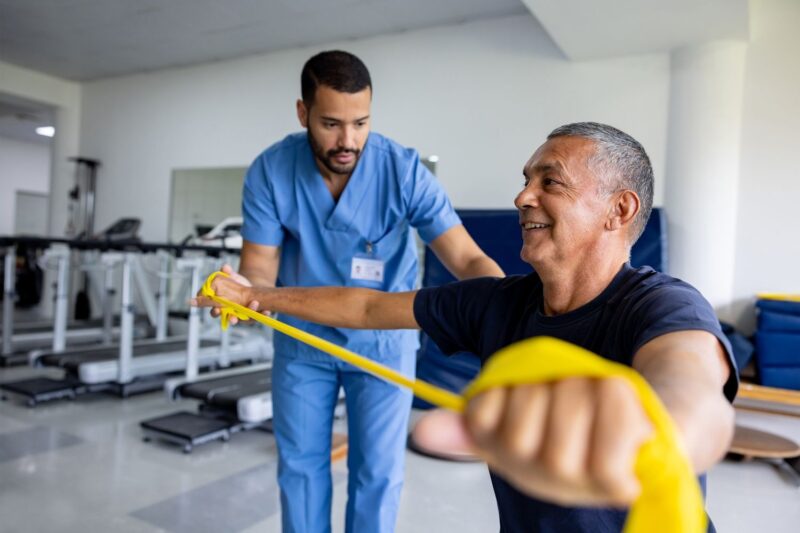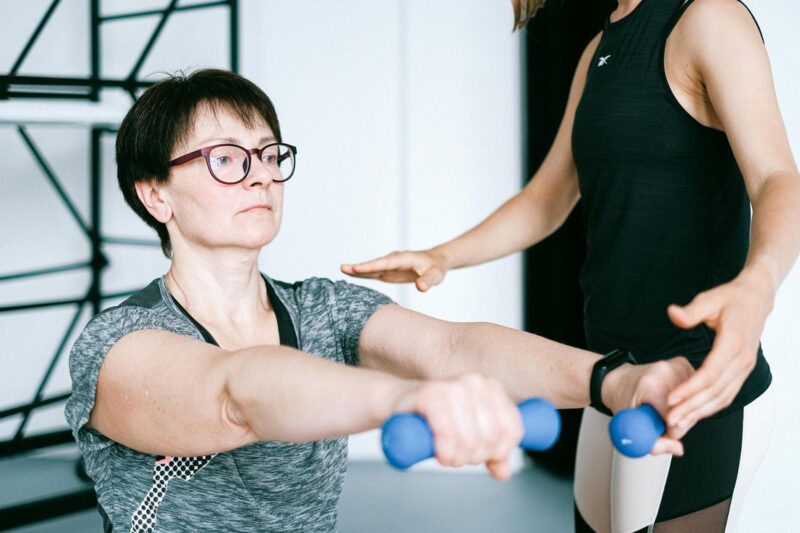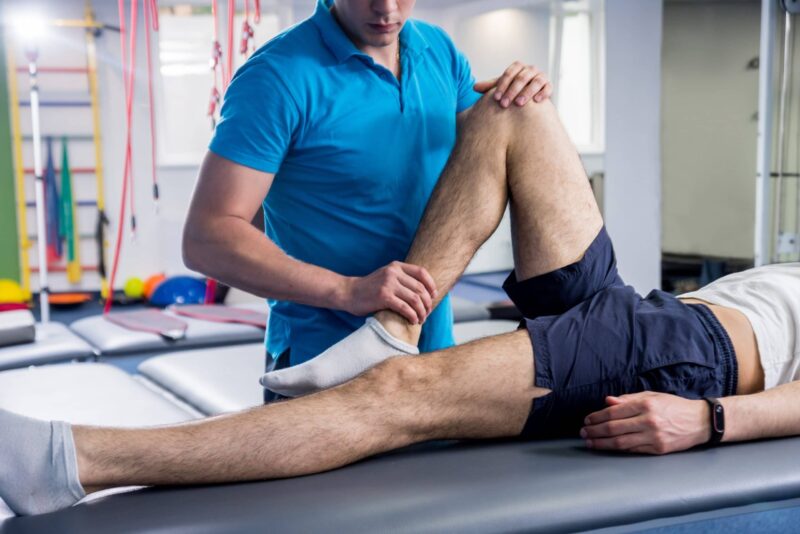Physical therapy plays a vital role in helping individuals regain their mobility and strength after injuries or surgeries. Whether it’s recovering from a sports injury, surgery, or a chronic condition, physical therapy is essential for restoring function, alleviating pain, and improving overall quality of life. This article will explore the science behind physical therapy and how it aids in the restoration of motion and strength.
Understanding Physical Therapy
Physical therapy is a healthcare discipline focused on the diagnosis, treatment, and prevention of physical disabilities and impairments. It involves a variety of techniques aimed at improving movement, strength, and overall function. Physical therapists utilize manual therapy, exercise programs, modalities like heat and cold therapy, and the latest technology to design personalized rehabilitation plans.
The human body is capable of remarkable self-repair, but sometimes injuries, surgeries, or long-term conditions hinder this natural process. Physical therapy helps by providing a controlled, systematic approach to healing, focusing on strengthening muscles, enhancing flexibility, and promoting proper body mechanics.
The Role of Physical Therapy in Restoring Mobility

Mobility refers to the ability to move freely and easily. For those recovering from an injury, surgery, or a condition like arthritis, mobility can become significantly impaired. Physical therapy helps restore mobility by targeting the joints, muscles, and tissues involved in movement.
One of the core goals of physical therapy is to improve joint function and muscle strength. Therapists design specialized exercises to enhance the range of motion, reduce stiffness, and promote fluid movement. Stretching and strengthening exercises can increase flexibility, allowing individuals to perform everyday activities like walking, climbing stairs, and bending with greater ease.
Therapists also focus on posture and body mechanics. When the body moves improperly, it can lead to strain and additional injuries. Correcting posture and teaching proper movement patterns during physical therapy sessions are essential components of restoring mobility.
The Science Behind Strength Recovery

Strength recovery is another critical aspect of physical therapy. After an injury or surgery, muscles often become weak or atrophied due to inactivity or immobility. This muscle loss can significantly impact a person’s ability to perform daily tasks and engage in physical activities.
Physical therapy helps to rebuild strength through a combination of resistance training, functional exercises, and neuromuscular re-education. Resistance exercises, such as weight lifting or using resistance bands, stimulate muscle fibers to grow stronger. These exercises are tailored to the individual’s needs and progress in intensity as the patient improves.
Functional exercises are also key to restoring strength, as they mimic real-life activities, such as squatting, lifting, or reaching. These exercises help the body regain the strength necessary for everyday tasks, as well as improve coordination and balance.
In addition to strengthening muscles, physical therapy works on improving the nervous system’s ability to communicate with muscles, ensuring proper movement patterns and reducing the risk of reinjury.
Pain Management and Injury Prevention

Physical therapy is not just about restoring motion and strength; it also plays a significant role in pain management. Whether it’s chronic pain from a condition like arthritis or acute pain from a recent injury, physical therapists use various modalities to alleviate discomfort.
Techniques such as heat and cold therapy, ultrasound, electrical stimulation, and dry needling are commonly employed to reduce pain and inflammation. These methods can also improve blood circulation, accelerate healing, and promote tissue repair.
In addition to managing pain, physical therapy focuses on injury prevention. Through strengthening exercises, body mechanics education, and flexibility training, therapists help individuals reduce their risk of future injuries. This proactive approach is essential for maintaining long-term health and avoiding setbacks.
Customized Rehabilitation Plans
Every individual’s body is unique, and the recovery process will vary based on factors like age, fitness level, and the type of injury or condition. This is why physical therapy is not a one-size-fits-all solution. Therapists create customized rehabilitation plans tailored to the individual’s needs and goals.
Whether the goal is to return to sports, improve posture, or simply move without pain, physical therapists develop specific strategies and exercises to meet these objectives. Progress is carefully monitored, and adjustments are made to the plan as needed to ensure optimal recovery.
For those in need of physical therapy in the area, physical therapy Wilkes Barre PA provides expert care designed to help patients restore their mobility and strength. These customized rehabilitation plans, combined with professional guidance and support, lead to the best possible outcomes for recovery.
The Benefits of Physical Therapy

Physical therapy offers numerous benefits that extend beyond restoring motion and strength. Some of the key advantages include:
- Improved Quality of Life: By reducing pain, restoring function, and improving strength, physical therapy helps individuals lead a more active and fulfilling life.
- Non-Invasive Treatment: Unlike surgery or medication, physical therapy is a non-invasive treatment option that promotes natural healing and recovery.
- Faster Recovery: Physical therapy can accelerate recovery after surgery or injury by providing targeted interventions that enhance healing and mobility.
- Long-Term Health: By focusing on prevention and strengthening the body, physical therapy helps individuals maintain long-term health and prevent future injuries.
- Personalized Care: Physical therapy is customized to each patient’s specific needs and goals, ensuring the most effective approach to recovery.
Conclusion
The science of motion is at the heart of physical therapy, where it works to restore mobility, strength, and function through specialized treatments and exercises. Whether it’s recovering from an injury or surgery, managing chronic pain, or preventing future injuries, physical therapy is an essential part of the healing process. Through customized rehabilitation plans, expert care, and a focus on long-term health, physical therapy helps individuals regain their independence and lead healthier, more active lives.
By understanding the science behind physical therapy, patients can make informed decisions about their treatment and begin their journey to recovery with confidence.



